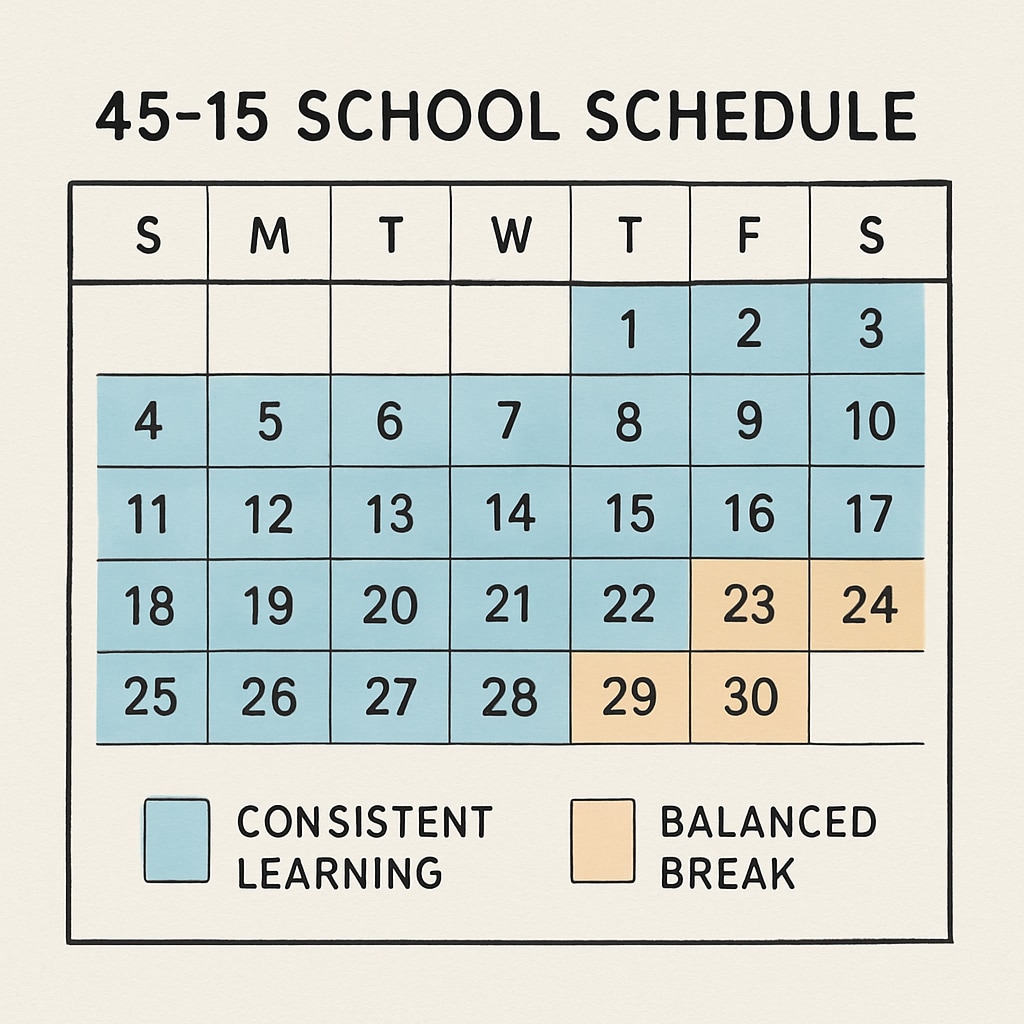Year-round schooling, as a substitute for traditional summer breaks, is gaining traction in K-12 education systems worldwide. This innovative approach, often structured as cycles of “one week on, one week off,” challenges the conventional long summer break model and addresses the critical issue of summer learning loss—commonly referred to as “summer slide.” By creating shorter and more frequent breaks, year-round schooling promotes steady learning habits, better retention of knowledge, and a more balanced educational experience for students.

Understanding the Problem: Summer Learning Loss
One of the primary motivators for year-round schooling is its ability to combat summer learning loss, a phenomenon where students forget significant portions of what they learned during the previous academic year. Studies show that students can lose up to two months’ worth of math and reading skills during a traditional summer break. This setback disproportionately affects students from low-income families who may lack access to enrichment activities during the long break.
Year-round schooling eliminates the extended summer break, replacing it with shorter, more frequent breaks throughout the year. These intervals provide students with time to recharge without losing their academic progress, maintaining consistent engagement with learning materials.
The Structure of Year-Round Schooling: A Balanced Rhythm
Unlike traditional schooling, which typically follows a nine-month academic calendar with a three-month summer break, year-round schooling adopts a more evenly distributed schedule. One popular format is the “45-15” model, where students attend school for 45 days and then take a 15-day break. This structure creates a predictable cycle that keeps students focused while also giving them regular opportunities to rest.
Benefits of this balanced rhythm include:
- Reduced stress and burnout for students due to shorter periods of continuous schooling.
- Consistent engagement with academic content, preventing knowledge loss.
- Opportunities for teachers to reevaluate and reinforce curriculum during breaks.
As a result, year-round schooling fosters a sustainable and effective learning environment for both students and educators.

Improving Knowledge Retention Through Consistent Exposure
Repetition and consistency are key elements of effective learning and memory retention. Year-round schooling ensures that students are exposed to academic content more frequently, minimizing gaps in learning. This approach aligns with cognitive studies that emphasize the importance of spaced repetition—reviewing information at regular intervals to strengthen memory.
Additionally, shorter breaks reduce the need for extensive review sessions at the start of each term, allowing educators to focus on introducing new material. This shift not only saves instructional time but also keeps students motivated to progress in their studies. For example, year-round schedules have been shown to improve retention in subjects like mathematics, where cumulative knowledge is essential for success.
For more information on the cognitive benefits of spaced repetition, visit Britannica’s overview on spaced repetition.
Addressing Concerns and Challenges
Despite its benefits, year-round schooling has faced criticism and logistical challenges. Some parents worry about the impact on family vacations or extracurricular activities, while others raise concerns about the cost of maintaining school facilities year-round. However, many schools have implemented creative solutions, such as aligning breaks with local holidays and offering flexible extracurricular programs.
Furthermore, research indicates that the long-term academic and social benefits of year-round schooling outweigh these concerns. As educators and policymakers continue to explore innovative models, year-round schooling remains a promising option for enhancing student success.
To learn more about the history and implementation of year-round schooling, explore Wikipedia’s detailed article on year-round school.
Readability guidance: Use concise paragraphs, highlight key benefits with bullet points, and maintain a balance of technical insights and practical examples. Transition words such as “however,” “therefore,” and “for example” ensure smooth flow between ideas.


